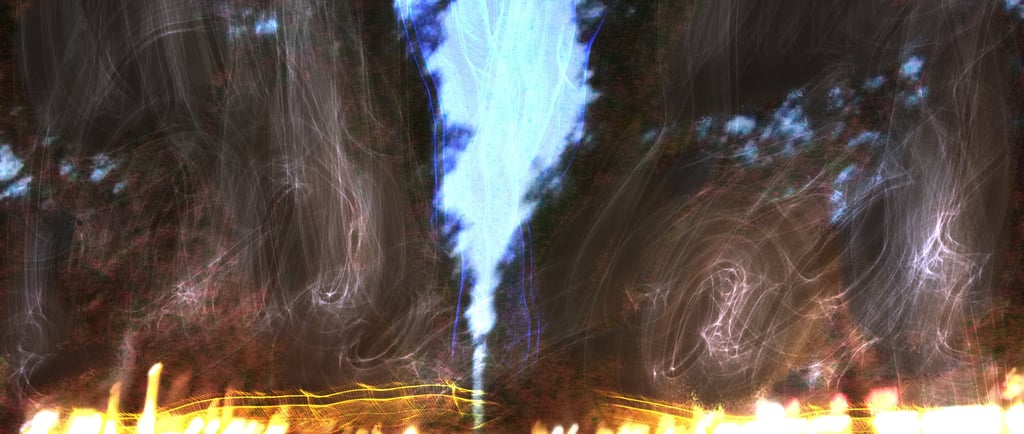Breaking Barriers: Overcoming Fear and Shame Through Creative Expression
MOTHERHOODSTORYTELLINGCREATIVITY
Maša Hilčišin
6/13/20253 min read


Few months ago, I moved to a new country with my 11-year-old son, to join my partner and explore a long-awaited change. I was craving something new—new landscapes, new communities, new rhythms. But with every fresh beginning, there comes a soft ache—a tender undercurrent of adjustment that humbles us.
It came in the form of language, new culture, new mentality, new environment.
I am learning a language so distant from my Slavic roots, it feels like crossing a vast, unfamiliar ocean. The words are strange. My thoughts, once fluid and expressive, now stumble and fall like toddlers finding their feet. In this quiet struggle, I am reminded of what it feels like to be invisible—to be present but not fully understood.
And so begins the unlayering.
When we build a new life from scratch, we strip away the titles and roles we once wore —artist, lecturer, teacher, friend. We arrive not as the sum of our achievements, but as newcomers, migrants, learners.
In this place, I am simply a woman with halting speech, sitting in silence among strangers, unsure if I’ve truly arrived or am still drifting.
Yet, this experience—this ache of being unseen—is one of the most sacred. It brings me back to my essence.
The Moment Shame Walked In
In a recent language class, surrounded by fellow migrants, I introduced myself. Or so I thought. The words didn’t land the way I meant them to. One woman, misunderstanding me, later referred to me as a “housewife”.
Misunderstandings in classes like these are common—after all, we're all still learning the language. But even knowing that, a wave of shame washed over me.
This woman didn’t know I’ve spent decades as an artist and educator, raising my child mostly alone.
I remained silent while dealing with waves of shame.
Shame. A deep, sharp sense of being wrongly seen. Not because there’s shame in being a housewife—there isn’t. The ache wasn’t about her perception, but about the stories I’ve told myself about worth, identity, and value.
Why did I feel so shaken by the label? What parts of me had I exiled in favor of more “acceptable” roles?
Returning to the Core Through Art
This moment cracked something open.
I returned to my paints—not to create beauty, but to create truth. I began painting self-portraits that weren’t pleasing, weren’t perfect. Wild hair. Crooked eyes. A strange, messy face.
I painted the parts of me I don’t usually show: the frightened woman, the joyful soul, the exhausted mother, the passionate artist, the woman who yells, the woman who loves deeply, the migrant who feels lost, the Slavic daughter of scattered family roots.
Through this process, I softened into myself. Not the persona, but the being. Not the “role,” but the heart that beats beneath it all.
Art became my bridge—from fear to freedom, from shame to self-love.
Creative Expression as a Pathway Home
There is healing in seeing yourself whole—in refusing to edit or apologize for who you are becoming. I wanted to witness all of me: A friend. A lover. A mother. A migrant. A middle-aged soul full of both fear and joy. An artist—scared, and brave. A housewife, a wife, a divorcée, a woman in partnership. A tired mother of a boy a boy going through puberty. A student—once again, and again. A woman who doesn’t yet speak the language of the place she now calls home. A sister who aches for her sister. A woman shaped by a complicated family story. A woman who was once alone, and at times overwhelmed by others. A woman who longs for solitude. A nature lover. A vegetarian who sometimes craves meat. A mother who sometimes yells. An experimental filmmaker. A woman who loves a tidy home. A Slavic woman with wild roots and a heart scattered across continents. The academic who now listens more than she speaks.The artist who dares to create from mess instead of mastery....
And most of all—the woman who is worthy, just as she is.
Creative expression is not about perfection. It is about permission. To speak even when the words aren’t right. To paint even when the lines are wild. To show up—fearful, trembling, bold, and human.
When we allow ourselves to create from the rawness of our becoming, we meet ourselves again. And that, dear reader, is where the healing begins.
If you're feeling lost, misunderstood, or buried under old roles—pick up a pen, a brush, your voice. Create your way back to yourself. Let your expression be the soft rebellion that tells the world: I am here. I am worthy. I am whole.